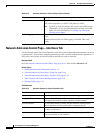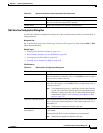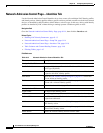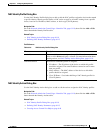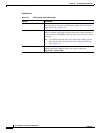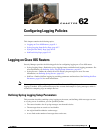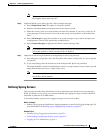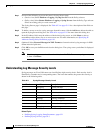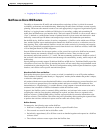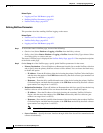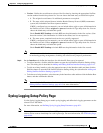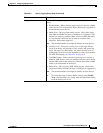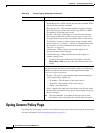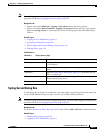
62-4
User Guide for Cisco Security Manager 4.4
OL-28826-01
Chapter 62 Configuring Logging Policies
Logging on Cisco IOS Routers
Step 1 Do one of the following to access the router’s Syslog Servers page:
• (Device view) Select Platform > Logging > Syslog Servers from the Policy selector.
• (Policy view) Select Router Platform > Logging > Syslog Servers from the Policy Type selector.
Select an existing policy or create a new one.
The Syslog Servers page is displayed. See Table 62-3 on page 62-11 for a description of the fields on
this page.
Step 2 To define a server to receive syslog messages from this router, click the Add button below the table to
open the Syslog Server dialog box. See Table 62-4 on page 62-12 for more about this dialog box.
Step 3 In the IP Address field, enter the address of the desired syslog server, or click Select to select a
network/host object from a list or to create a new one. For more information, see Specifying IP
Addresses During Policy Definition, page 6-81.
Step 4 (Optional) Select Forward Messages in XML Format to forward received syslog messages in XML
format instead of plain text.
Step 5 Click OK to save your definition and close the dialog box. The syslog server you defined is displayed
in the table.
Note To edit a syslog server, select it from the table, then click Edit. To remove a syslog server, select
it, then click Delete.
Understanding Log Message Severity Levels
Syslog messages on Cisco IOS routers are classified into eight severity levels. Each severity level is
identified by a number and a corresponding name. The lower the number, the greater the severity, as
shown in the following table.
Related Topics
• Defining Syslog Logging Setup Parameters, page 62-1
• Defining Syslog Servers, page 62-3
Table 62-1 Syslog Message Severity Levels
Level Number Level Name Description
0 emergency System unusable
1 alert Immediate action needed
2 critical Critical conditions
3 errors Error conditions
4 warnings Warning conditions
5 notifications Normal but significant condition
6 informational Informational messages only
7 debugging Debug messages



